7 Stats Leading the Remote Future of Work
Does the modern workplace have a need for an established office? It’s hard to believe that would even be a conversation we would be having where the last 20 years have seen tech companies like Google, Facebook, Adobe, and others bringing anything and everything you could think of to their giant campuses.
Remote work is on the rise, and If you want to connect with the up and coming generations then you need to be able to provide the resources for productivity and collaboration.
In the first-ever State of Collaboration Report, an August 2019 survey of ~1000 U.S. based office workers aged 18-60 brings up the growing question of how to connect and collaborate with a modern workplace that features remote workers, office workers, and the global workforce.
The report brought up seven interesting trends on collaboration, remote work and how to best work together.
1. The majority of Gen Z and Millennials work remotely each week.
The growing desire for work-life balance, the flexibility of where to live, and the rising costs of living in commercial hubs like San Francisco and New York are all leading to the younger workforce looking for remote work opportunities or the chance to avoid 2 hours of commuting each day with some time at home. That desire paired with the technology provided by collaborative tools like Zight (formerly CloudApp), Zoom, Asana, Calendar.com, and others brings up the need for businesses to embrace the future modern workplace.
According to the survey, 57% of Gen Z, 50% of Millennials, and even 46% of Gen Xers are working from home at least once a week. 1 in 4 office workers state they work from home at least half the time.
The small variance in the three dominant generations of today’s workforce shows the evolution of the remote modern workplace. Only 37% of Baby Boomers listed working remotely at least once a week. The generational shift shows the need for businesses to latch onto its future.
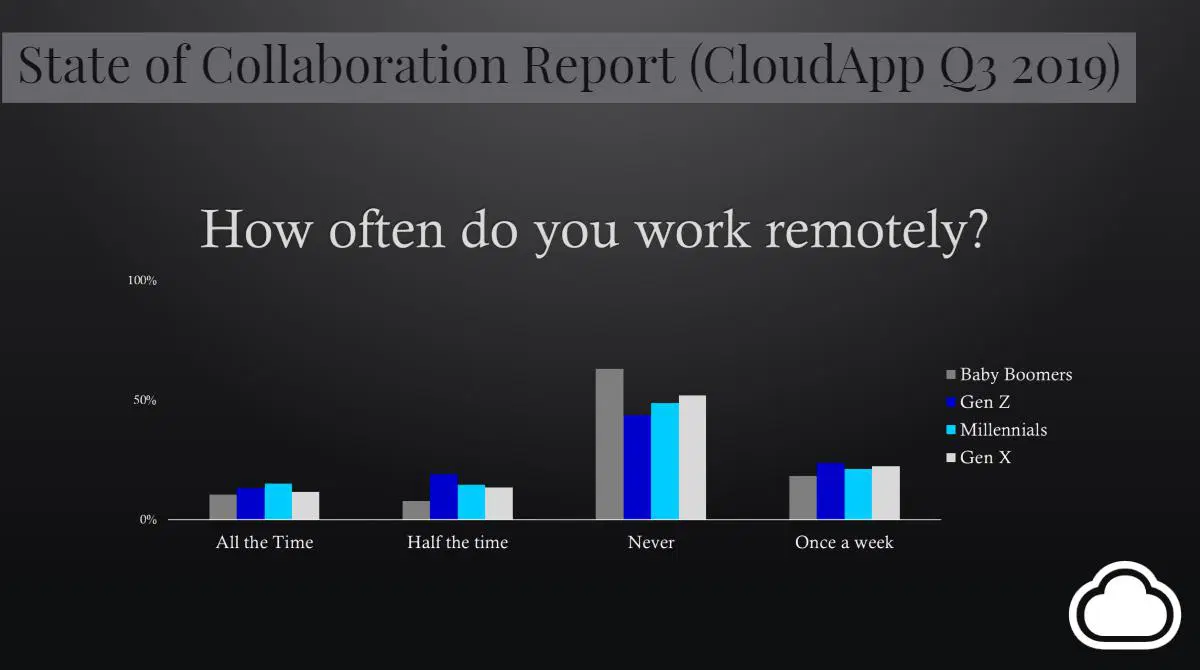
2. In a remote world – office workers still prefer in-person communication
Music to the ears of the giant HQs out in the world. 62% of those surveyed said they still preferred in-person communication to digital channels.
There is still a lot of value in getting together and connecting. Managing a remote workforce should still have moments to meet in real life and connect on a different level.
It’s important that your collaborative stack includes video, in person, and collaborative tools like Slack and Zight (formerly CloudApp) to maximize effectiveness. The in-person connection can lead to better collaboration through text on Slack or with the creation of shareable screenshots, screen recordings, and GIFs with Zight (formerly CloudApp).
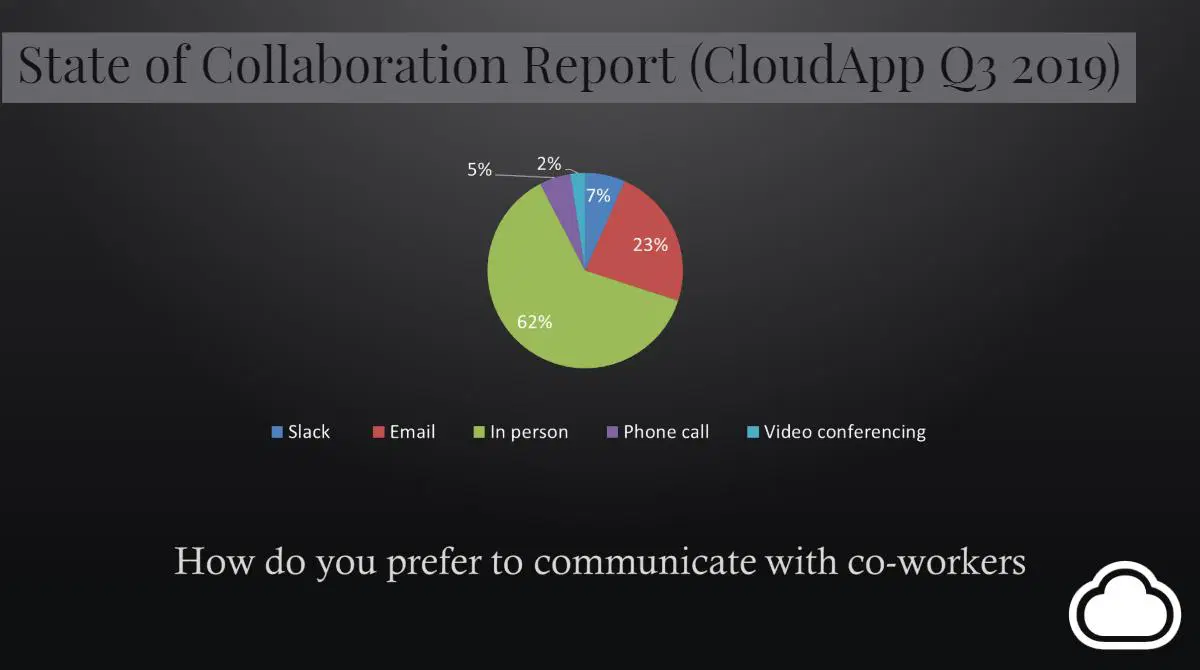
3. Gen Z and Millennial office workers love Slack —- Gen X all-in on video
Tools like Slack and Teams have completely revolutionized the office water cooler and how we communicate. Different channels can connect complex matrix teams into one central space.
Gen Z and Millennials are nearly 3x more likely to use Slack to communicate than Baby Boomers and Gen Xers. It has to be the emojis. Who, aged 18-38, doesn’t love a good starry eye emoji to a post about closing a big deal?
Zoom became a unicorn in 2019 with its IPO and its led by Gen X. The survey showed that Gen X is nearly 4x more likely to use video conference software like Zoom or BlueJeans to communicate with their team. Tools for video conferencing or for the creation of video assets for sales, marketing, engineering, or customer support are growing in popularity.
Businesses should recognize the growth of video and collaborative tools in order to stay ahead of the shift. Finding ways to support team collaboration with tools like Slack, Zoom, and Zight (formerly CloudApp) can be extremely beneficial for remote workers as well.
4. More than 1 in 2 office workers say they would collaborate more if done visually (videos, images, video calls)
If it can’t be in person, all office workers are showing an affinity for visual communication. Visuals have a way of connecting you through context and enhanced tone. So much is lost through text that can be brought in through visuals.
Visual communication is also a shift in the modern workplace with 1 in 5 baby boomers are unlikely to collaborate more if done visually. Nearly 2x more than other generations. Using visuals can help to eliminate long meetings, add context to textual based conversations, and maybe just maybe eliminate the need for more back and forth emails.
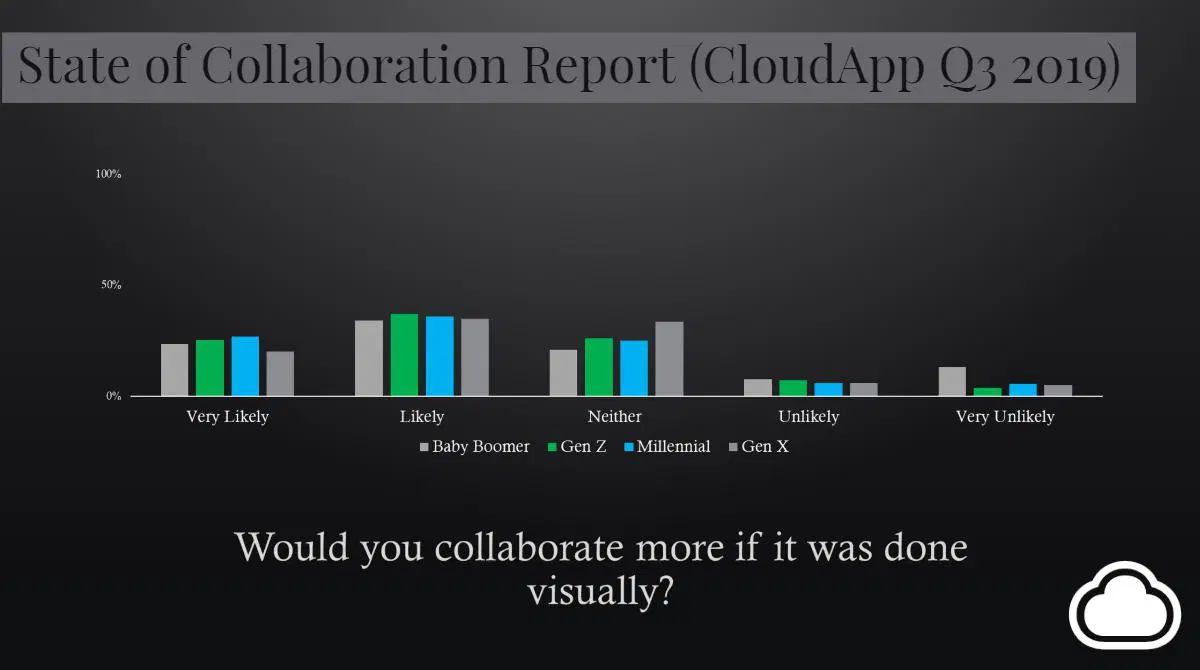
5. More than 60% of Gen Z and Millennials said they would collaborate more if done visually (images, video, video calls)
The future of work is led by visuals, video, and remote work. Visuals can provide a great bridge to connecting the workforce. Millennials and Gen Z office workers have grown up with camera phones, smartphones, and YouTube.
These generations are comfortable with putting themselves in front of a camera and talking through things. They have learned to express ideas with screenshots and GIFs on social media and other channels.
The growth of visuals in emerging generations is something that can be harnessed for good as businesses look to get the most out of a productive workforce.
6. 94% of office workers list team collaboration as a top priority.
Nearly 100 percent of office workers list collaboration as a top priority. That means people recognize the need to work with others to accomplish goals. Office workers of all generations rely on one another.
It is no surprise that collaboration is craved by all generations of office workers. The key is for companies to harness that craving through a clear toolset, training, and top-down examples.
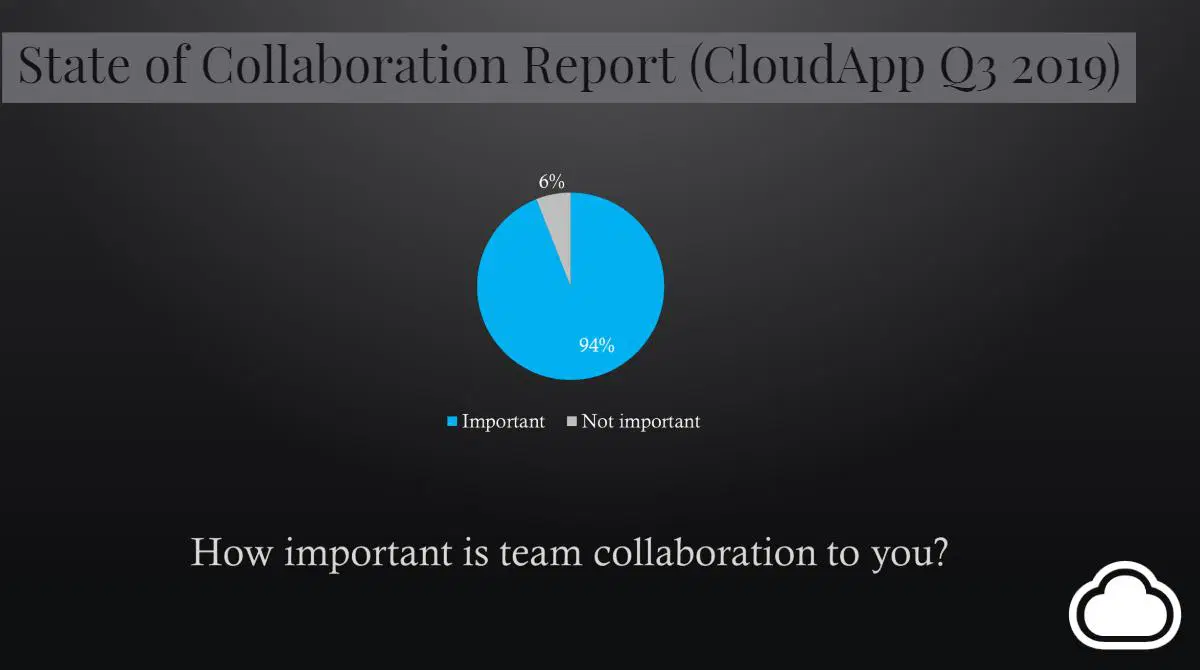
7. For engaging with customer support, 1 in 3 of Gen Z and nearly 50% of Millennials prefer online live chat or via text in-app or phone.
Modern collaboration extends into customer support as well. While all generations prefer to phone, the share of Gen Z and millennials engaging in live chat is impressive. Businesses can look to harness the emerging trend paired with visual collaboration expectations to create a true customer experience for Gen Z and Millennial customers.
Baby Boomers and Gen Xers prefer to communicate on the phone with customer support 40% more than Gen Z and Millennials, but live chat is still a medium to be considered with both of these generations.
The modern workplace encompasses both remote work and visuals. In order to create a collaborative environment and effectively grow with the emerging generations look to incorporate tools like Zight (formerly CloudApp), Zoom, Airtable, Calendar.com, and others. These productivity apps can help you to make sure you are providing the remote experience your employees demand, even more so than that nap pod or ping pong table.
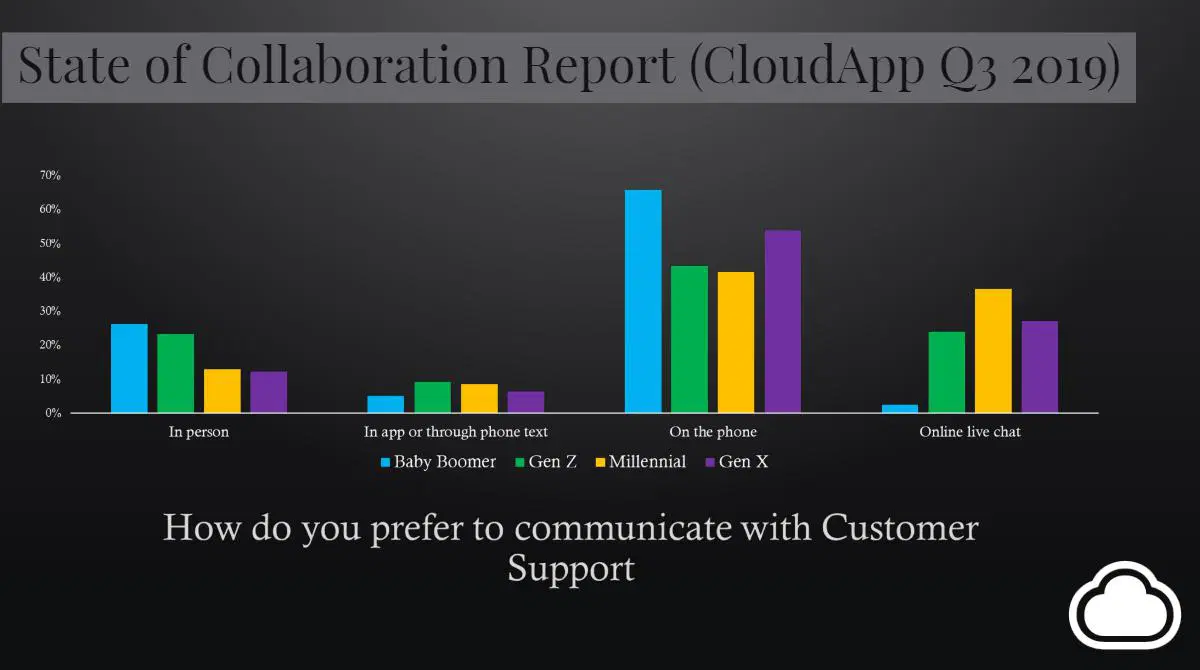
To download the PDF report visit – https://www.slideshare.net/secret/9x2cvAvromBsTd
